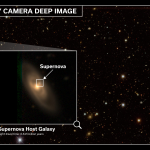Bonobo communication is a fascinating area of study that unveils the intricate vocal patterns of these remarkable primates, closely related to humans. Unlike many other animal species, bonobos utilize a nuanced system of vocalizations that mirrors some aspects of human language. Research indicates that their communication includes the use of compositionality, where they combine vocal sounds into meaningful expressions, much like humans form sentences. This ability not only showcases their sophisticated social behavior but also sheds light on the evolution of language itself. As scientists delve deeper into bonobo social interactions, their unique language study continues to provide valuable insights into the complexities of animal communication and our own linguistic origins.
The communication methods of bonobos illustrate a sophisticated system that rivals human language in its complexity. With their capacity for creating meaningful vocalizations, these primates exhibit a level of social interaction that is reflective of their advanced behavioral traits. Researchers exploring bonobo language have revealed how these animals employ vocal combinations to convey elaborate social messages and navigate their social hierarchies. Furthermore, the study of bonobos serves as an enlightening perspective on animal communication, helping us to understand how traits associated with language evolution may stem from our shared ancestry. As we observe these intelligent creatures, we begin to appreciate the depth of their interactions and the implications for the understanding of language across species.
Understanding Bonobo Communication: A Glimpse into Their Vocalizations
Bonobos, closely related to humans, display a fascinating array of vocalizations that serve multiple communicative functions. Recent studies have shown that their calls include a variety of sounds such as peeps, yelps, and whistles, each signaling different social cues and emotional states. For instance, a bonobo might emit a peep to indicate tension before they whistle to coordinate group movements over larger distances. This complexity in vocal signals suggests that bonobos employ a sophisticated system of communication, reflecting their intricate social dynamics as they navigate their environments and relationships.
These vocalizations indicate not only the immediate emotional state of individual bonobos but also the broader social context, hinting at an underlying structure akin to language. Researchers have begun to compile a dictionary of bonobo vocalizations that elucidates the meanings behind these sounds. This dictionary illustrates the phonetic nuances of bonobo communication and allows us to appreciate the layers of meaning that can arise from simple vocalizations—akin to the way humans use language to express complex social realities.
The Role of Compositionality in Bonobo Communication
Compositionality, a term often used in linguistic studies, refers to the ability to combine smaller elements to create new meanings. In the context of bonobo communication, this concept is pivotal since it aligns with their use of vocalizations to convey complex information. For example, just as combining ‘bad’ and ‘dancer’ creates a new interpretation, bonobos can combine different calls to reference specific events or emotions, enhancing their ability to communicate nuanced information. This capability reveals a deeper cognitive skill set that is similar to the foundational structures of human language, suggesting an evolutionary development that may precede our own linguistic abilities.
The study conducted by researchers at the University of Zurich and Harvard University showcases how bonobos’ vocal repertoire is not just a random collection of sounds but rather a meaningful system that relies on compositionality. This underscores the idea that the roots of language, including complex linguistic features, might extend beyond humans and into our closest evolutionary relatives. Such findings challenge traditional views on language evolution and highlight the sophistication found in animal communication systems.
Bonobos and Social Behavior: Communication as a Tool for Survival
Bonobo social structures are intricate, marked by strong bonds and cooperativity between members of a group. Effective communication among bonobos is essential for maintaining these relationships, especially as they navigate the complexities of group dynamics. The ability to vocalize accurately signals social cues, which can influence group cohesion and interaction during foraging or moving through their habitat. In situations where groups split and later reunite, vocal signals become critical, allowing bonobos to coordinate and re-establish connections, ensuring social harmony.
Moreover, researchers have found that vocalizations can serve as alerts for potential dangers, showcasing the practical functions of their communication system. By understanding the meaning behind different calls, bonobos can alert others of predators or indicate a need for assistance, ultimately aiding in the survival of the group. This practical aspect of bonobo communication not only enhances their internal social fabric but also reflects a level of intelligence and adaptation that parallels human social behavior.
Language Evolution: Insights from Bonobo Communication Studies
The study of bonobo communication offers significant insights into the evolution of language, shedding light on the characteristics that may have preceded human language development. With bonobos exhibiting signs of compositionality and complex social communication, researchers suggest that such traits could have been present in early human ancestors. This perspective enriches our understanding of how language might have evolved as a means not only of carrying information but also of reinforcing social bonds among early hominins.
Investigating animal communication, particularly in species like bonobos, allows researchers to explore the evolutionary continuum of language. By analyzing how these animals utilize vocalizations to convey nuanced messages, we can retrace steps of language development. These findings indicate that the journey towards complex language systems may not be unique to humans but rather a shared evolutionary trait, reflecting a long-standing relationship between vocal complexity and social complexity.
The Impact of Research on Bonobo Communication on Animal Studies
The groundbreaking research surrounding bonobo communication is paving the way for a new scientific understanding of animal behavior and language. By applying methods traditionally used in linguistics to study bonobos, researchers are uncovering the intricate ways in which animal communication systems function. This approach has not only advanced the study of bonobos but also inspired a reevaluation of communication in various other animal species, recognizing the potential for complexity beyond mere instinctual behavior.
The development of a systematic dictionary of bonobo vocalizations is significant because it equips researchers with essential tools to analyze communication patterns across different species. Such insights can ultimately inform conservation strategies, enhance our understanding of social structures within animal communities, and lead to a more profound appreciation of the cognitive capabilities of non-human species. This research prompts further inquiries into animal communication, advocating for a broader view of language as a pivotal aspect of survival and social interaction.
Bonobo Social Dynamics: The Role of Vocal Communication
Bonobo social dynamics rely heavily on effective vocal communication, as these primates navigate complex interpersonal relationships within their groups. Understanding the way bonobos vocalize in response to one another offers critical insights into their social structure. Through their calls, bonobos can express emotions, coordinate activities, and establish social hierarchies. For instance, a subtle peep before a whistle serves to signal tension, indicating the bonobo’s awareness of the social climate around them.
Moreover, vocal communication in bonobos is not just about immediate interaction but also reflects their long-term social bonds. As members of a group engage in vocal exchanges, these interactions reinforce connections and promote social cohesion. This interplay highlights the importance of communication in shaping bonobo society and fosters a deeper understanding of how vocalizations contribute to maintaining these intricate social networks.
Comparative Studies: Bonobos and Chimpanzees in Communication Research
Research into the communication behaviors of bonobos has often been juxtaposed with studies on chimpanzees, highlighting both similarities and differences in their vocal practices. Both species exhibit complex social behaviors, and their communication reflects their social structures. However, recent studies emphasize that bonobos utilize a more sophisticated method of compositionality in their vocalizations, indicating a potential edge in their evolutionary adaptation to social living.
Understanding these differences is critical, as it can inform our approach to studying other species with similar social systems. By comparing chimpanzees and bonobos, researchers can draw conclusions about the development of communicative abilities and the evolutionary pressures that shaped these monkeys. Such comparative studies provide a well-rounded view of animal communication and enrich our understanding of the evolutionary origins of human language.
Future Directions in Bonobo Communication Research
As the field of animal communication evolves, future research on bonobo vocalizations promises to yield even deeper insights into the complexities of language-like features found in animal behavior. There is a growing interest in exploring the nuances of bonobo calls in varied contexts—such as environmental changes or social pressures—further illuminating how these vocalizations adapt to specific circumstances. Longitudinal studies that encompass different life stages and social interactions could provide valuable data to enhance our understanding of vocal communication.
Additionally, incorporating technology such as acoustic analysis software will enable researchers to delve into the subtle differences in vocalizations that may carry significant meanings. As these tools become more advanced, they will allow scientists to decipher complex patterns and enhance our understanding of how bonobos and similar species might rely on nuanced communication to thrive in their environments. Ultimately, pushing the boundaries of research in bonobo communication could lead to revolutionary insights into the evolution of language itself.
Frequently Asked Questions
How do bonobos communicate complex social situations through vocalizations?
Bonobos communicate complex social situations using a range of vocalizations, similar to human language. Research indicates that they employ compositionality, forming call combinations that convey nuanced meanings, such as commands or emotional states, paralleling the structure of human language.
What is compositionality in bonobo communication?
Compositionality in bonobo communication refers to the ability of these primates to combine vocalizations to express complex ideas, much like human language. This means that specific sounds can be paired or sequenced to create new meanings and convey intricate social relationships.
What evidence supports the idea that bonobo language is related to human language evolution?
Research shows that bonobos utilize vocalizations that exhibit compositionality, a feature considered essential in human language evolution. The evolutionary link between vocal complexity and social complexity suggests that the roots of linguistic capabilities may predate human language, implying a shared ancestral trait.
How does bonobo social behavior influence their communication methods?
Bonobo social behavior, characterized by complex bonds and subgroup formations, greatly influences their communication methods. Their sophisticated vocalizations help coordinate group dynamics and maintain social relationships over distances, indicating that social complexity drives the evolution of their communicative abilities.
Can we learn about human language evolution by studying bonobo communication?
Yes, studying bonobo communication offers insights into human language evolution. As bonobos share a common ancestor with humans, their use of compositionality and complex vocalizations can help researchers understand the development of language and social behaviors in our own species.
What role does the Kokolopori reserve play in bonobo language study?
The Kokolopori reserve serves as a vital field site for bonobo language studies, providing researchers with the opportunity to observe wild bonobos in their natural habitat. The rich social interactions and vocal behaviors documented there are key to unraveling the complexities of bonobo communication and its implications for understanding language.
How do researchers establish a dictionary of bonobo vocalizations?
Researchers establish a dictionary of bonobo vocalizations by meticulously documenting various calls and the contexts in which they occur. This involves classifying sounds based on their meanings and potential actions, enabling the team to create a structured representation of bonobo communication.
What makes bonobos’ vocalizations unique among animal communication studies?
Bonobos’ vocalizations are unique because they display a high level of compositionality, akin to human language. While many species use calls, bonobos can combine sounds in sophisticated ways to convey specific meanings, marking a significant advance in our understanding of animal communication.
| Key Point | Details |
|---|---|
| Bonobo Vocalizations | Bonobos use a variety of vocalizations similar to human language, indicating complex communication. |
| Study Insights | Research indicates that bonobos use combinations of calls that show ‘compositionality’, akin to human language structures. |
| Social Complexity | Bonobos have intricate social bonds which are reflected in their vocal communication, allowing coordination and interaction over distances. |
| Research Findings | The study compiled a dictionary of vocalizations, demonstrating how different sounds correspond to various social contexts and meanings. |
Summary
Bonobo communication is a fascinating topic that reveals insights into the evolution of language. This research underscores the complexity of social interactions among bonobos, highlighting that they communicate in ways that are surprisingly similar to humans. Their vocalizations go beyond simple sounds; they form patterns and combinations that convey specific meanings in various social contexts. Understanding bonobo communication not only sheds light on their behavior but also suggests that the roots of human language may share commonalities with our closest relatives in the animal kingdom.







